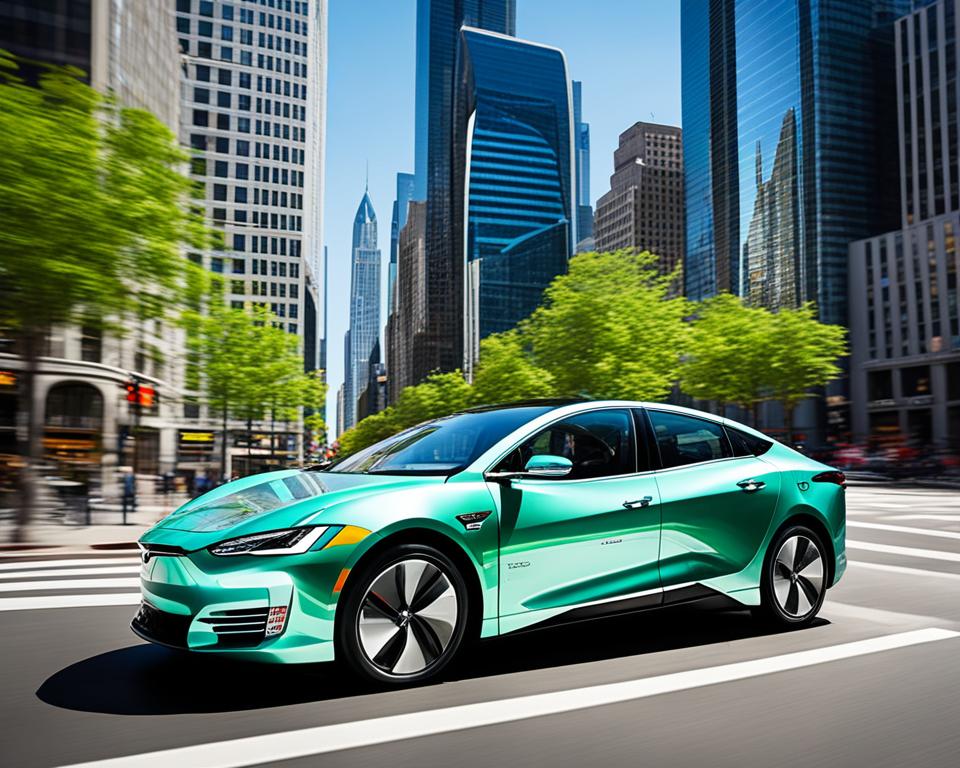As the transportation industry undergoes a transformative shift towards electrification, I believe that hybrid cars and plug-in hybrid electric vehicles (PHEVs) are emerging as the future of urban mobility. These vehicles offer a compelling combination of fuel efficiency, reduced emissions, and versatility that can appeal to a wide range of consumers.
Hybrid cars and PHEVs utilize both a gasoline engine and an electric motor, allowing them to operate on electric power for shorter trips while retaining the range and flexibility of a gas-powered car for longer journeys. This unique capability presents a practical compromise as the industry moves towards a more sustainable future, with PHEVs serving as a viable option for mainstream buyers who may not yet be ready to fully commit to a battery electric vehicle (BEV).
With fluctuating gas prices and the high cost of fully electric cars, PHEVs are experiencing a resurgence in popularity, providing a cost-effective and eco-friendly transportation solution for urban and suburban drivers. By seamlessly transitioning between electric and gas-powered modes, these vehicles can help reduce emissions and fuel consumption, making them an attractive choice for those seeking a more sustainable and practical mobility solution.
Key Takeaways
- Hybrid cars and plug-in hybrids offer a compelling blend of fuel efficiency, reduced emissions, and versatility.
- These vehicles can operate on electric power for shorter trips while retaining the flexibility of a gas-powered car for longer journeys.
- PHEVs present a practical compromise as the industry shifts towards electrification, appealing to mainstream buyers.
- Fluctuating gas prices and the high cost of BEVs have contributed to the resurgence of PHEV popularity.
- Hybrid and PHEV models can help reduce emissions and fuel consumption, making them an attractive choice for sustainable urban mobility.
The Resurgence of Plug-In Hybrid Vehicles
The sales of plug-in hybrid vehicles (PHEVs) in the United States have more than doubled since 2019, according to data from Statista. This resurgence in popularity can be attributed to the impact of fluctuating gas prices, as well as the affordability challenges associated with fully electric vehicles. While the industry has been focused on the transition to battery electric vehicles (EVs), some automakers are recognizing the continued value of PHEVs as a practical compromise.
Rising Popularity Amid Fluctuating Gas Prices
The unpredictable nature of gas prices has played a significant role in the growing appeal of plug-in hybrid vehicles. As consumers seek more cost-effective and fuel-efficient transportation options, PHEVs have emerged as a viable solution, combining the benefits of electric power for shorter trips with the flexibility of a gasoline engine for longer journeys.
Automakers’ Shifting Strategies: From PHEVs to Full EVs
While some automakers, like General Motors, plan to phase out gasoline-powered cars, including PHEVs, in favor of a full electric vehicle lineup by 2035, others, such as Volvo, continue to offer both hybrid and electric models. This acknowledgment of the diverse transportation needs of consumers highlights the ongoing role that plug-in hybrid technology will play in the evolving automotive landscape.
Understanding Plug-In Hybrid Electric Vehicles (PHEVs)
Plug-in hybrid electric vehicles (PHEVs) are a unique breed of hybrid cars that combine a gasoline engine with an electric motor and a larger battery pack. This combination allows PHEVs to operate in pure electric mode for shorter distances, typically ranging from 30 to 42 miles, before seamlessly transitioning to a hybrid gas-electric mode for longer trips.
How PHEVs Combine Gas and Electric Power
The ability to alternate between electric and gas power can help PHEV owners maximize their fuel savings. For example, the 2024 Toyota RAV4 Prime can cover 42 miles on electric power alone and achieve an EPA-estimated 38 mpg in hybrid mode, with projected annual fuel costs of just $1,000.
Fuel Efficiency and Cost Savings with PHEVs
This versatility can provide significant fuel efficiency and cost savings for owners who regularly charge their vehicles and take advantage of the electric-only range. The ability to switch between electric and hybrid modes based on individual needs and driving conditions is a key strength of PHEV technology, making these models an increasingly attractive option for a wide range of consumers.
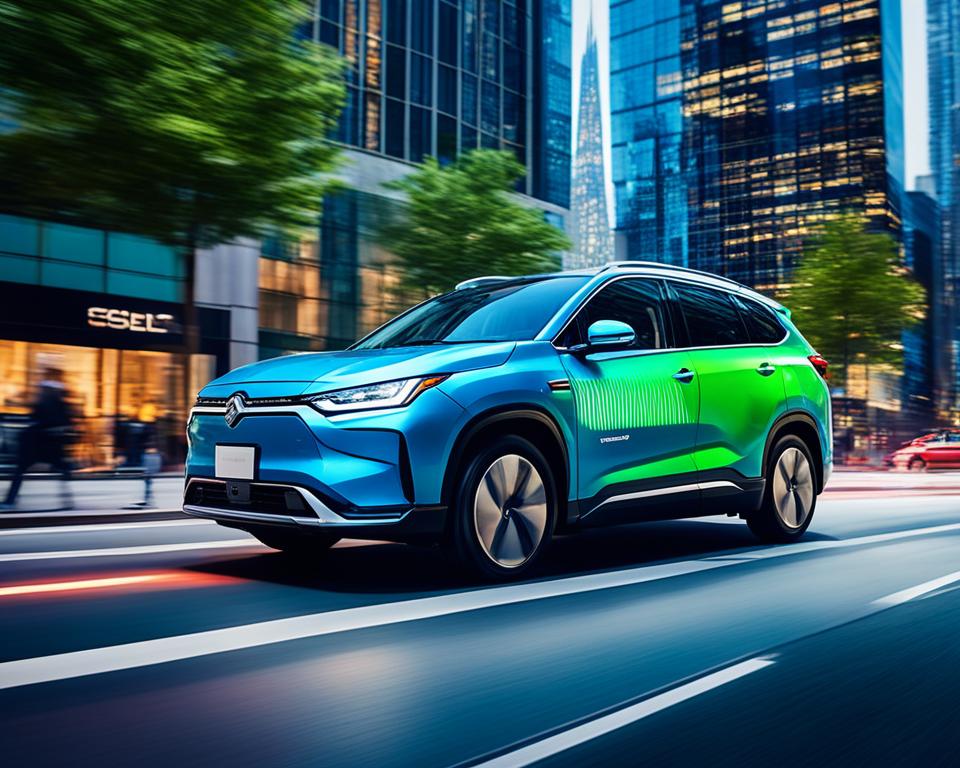
Hybrid Cars and Plug-In Hybrids: Fuel Efficiency Powerhouses
Hybrid cars and plug-in hybrids have emerged as fuel efficiency powerhouses, offering consumers a compelling balance of electric and gas-powered performance. The Toyota RAV4 Prime, for instance, can travel up to 42 miles on electric power alone, and when the battery is depleted, it can still achieve an impressive 38 mpg in combined city/highway driving on gasoline.
Hyundai Santa Fe PHEV: Balancing Electric Range and Gas Power
The 2023 Hyundai Santa Fe PHEV, on the other hand, has a slightly shorter all-electric range of 30 miles, but can still travel up to 440 miles in total, seamlessly switching between electric and gas power as needed. These versatile models demonstrate the ability of hybrid and plug-in hybrid technologies to deliver significant fuel savings and reduced emissions, making them an increasingly attractive option for urban and suburban drivers.
Overcoming the EV Price Gap: The Case for PHEVs
One of the key barriers to widespread EV adoption has been the pricing disparity between traditional gasoline-powered vehicles, hybrid models, and fully electric cars. This EV price gap remains a significant challenge, with automakers like Volvo demonstrating the stark differences in pricing between their gas-only, hybrid, and all-electric offerings.
For instance, the 2024 Volvo XC90 gas-only model starts around $58,000, while the hybrid XC90 Recharge variant is priced nearly $15,000 higher. Similarly, the difference between the base gas-powered Volvo XC40 and its all-electric Recharge counterpart is almost $12,000. In this context, plug-in hybrids can serve as a practical compromise for mainstream buyers, offering a more attainable path to reduced emissions and fuel savings without the steep price premium of a fully electric vehicle.
Pricing Disparities between Gas, Hybrid, and Electric Models
The significant gap in hybrid vehicle pricing and plug-in hybrid pricing compared to traditional gasoline-powered models presents a significant hurdle for many consumers. Automakers must balance the cost of developing and producing these advanced powertrain technologies with the need to make them affordable and accessible to a wider audience.
PHEVs: A Practical Compromise for Mainstream Buyers
As the industry navigates the transition towards electrification, plug-in hybrid electric vehicles (PHEVs) offer a compelling practical compromise for mainstream buyers. By combining the benefits of electric and gasoline-powered operation, PHEVs provide a more attainable option for those seeking to reduce their environmental impact and enjoy the cost savings of electric driving, without the steep price premium associated with fully electric vehicles.
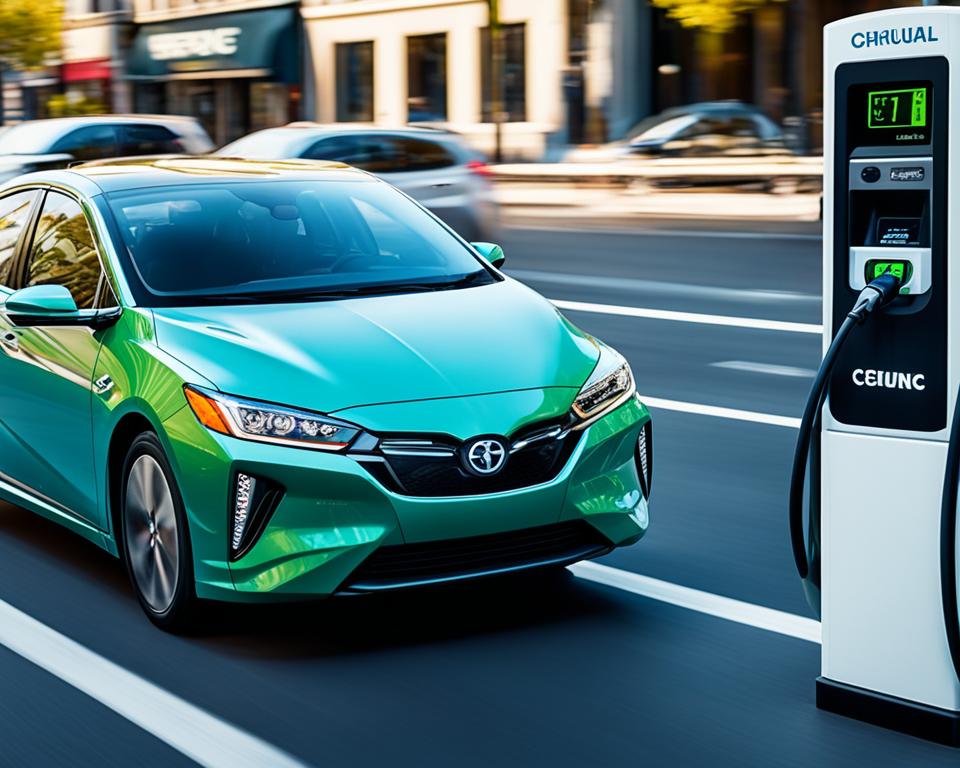
The Chevrolet Volt: Trailblazer of Plug-In Hybrid Technology
The Chevrolet Volt was a pioneering plug-in hybrid electric vehicle that helped pave the way for the resurgence of PHEV technology. Introduced in 2011, the Chevrolet Volt combined a gas engine with an electric motor and a sizable battery pack, allowing it to operate in pure electric mode for shorter distances before seamlessly transitioning to hybrid operation.
However, despite the Volt’s innovative approach, it eventually lost sales momentum as Tesla’s game-changing Model S EV became the new standard-bearer for electric vehicles. General Motors, the parent company of Chevrolet, later shifted its focus towards full electrification, investing $35 billion in EV and battery development and aiming to transition to an all-electric lineup by 2035.
While the Volt’s production ended in 2019, its legacy as a PHEV trailblazer continues to influence the industry’s evolving strategies towards sustainable mobility.
Hybrid Cars and Plug-In Hybrids: Advantages and Challenges
Hybrid cars and plug-in hybrids offer a range of advantages and face unique challenges compared to traditional gasoline-powered and fully electric vehicles. One of the key advantages of PHEVs is their ability to alleviate range anxiety and belabored refueling associated with battery electric vehicles. By combining electric and gas powertrains, PHEVs can provide the convenience of extended range and quicker refueling, making them a more practical option for drivers who may not have reliable access to charging infrastructure.
Reduced Range Anxiety and Belabored Refueling
The integration of a gasoline engine in hybrid and plug-in hybrid models allows for a seamless transition between electric and gas-powered modes, providing drivers with the flexibility to cover longer distances without the concern of being stranded due to a depleted battery. This versatility can be particularly beneficial for those who live in areas with limited charging options or for individuals who frequently embark on road trips that exceed the all-electric range of a typical battery electric vehicle.
Battery Shortages and Supply Chain Disruptions
However, the industry is not without its challenges, as automakers grapple with battery shortages and supply chain disruptions that can impact the production and availability of both hybrid and electric models. The global semiconductor chip shortage, for instance, has forced manufacturers to prioritize the allocation of these critical components, sometimes leading to production delays or reduced model availability. Navigating these obstacles will be crucial as the transition to more sustainable transportation solutions continues to unfold.
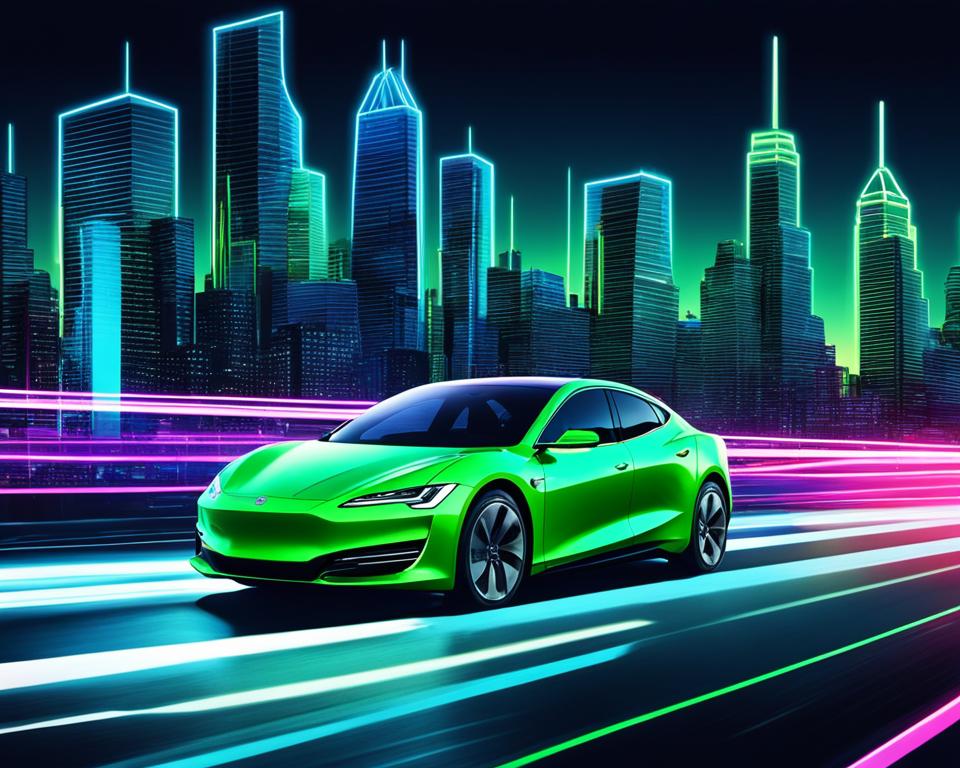
Hybrid Cars and Plug-In Hybrids: Combining Efficiency and Versatility
Hybrid cars and plug-in hybrids offer a compelling combination of efficiency and versatility, catering to the diverse transportation needs of today’s consumers. These vehicles provide tailored solutions, allowing drivers to take advantage of all-electric driving for shorter trips while retaining the flexibility of a gas-powered engine for longer journeys or when access to charging infrastructure is limited.
Tailored Solutions for Diverse Transportation Needs
The ability to switch between electric and hybrid modes based on individual needs and driving conditions is a key strength of this technology, making hybrid and PHEV models an increasingly attractive option for a wide range of users. As urban mobility continues to evolve, the versatility and efficiency of hybrid and plug-in hybrid vehicles will play a vital role in meeting the varied transportation needs of people living and working in cities.
The Future of Urban Mobility: Hybrid Cars and Plug-In Hybrids
Hybrid cars and plug-in hybrids are poised to play a crucial role in shaping the future of urban mobility. As cities strive to reduce emissions and promote more sustainable transportation solutions, these vehicles offer a tangible path forward. The ability of hybrid and PHEV models to operate in all-electric mode for shorter distances can significantly contribute to lowering emissions and improving air quality in urban areas.
Emissions Reduction and Sustainable Transportation
The emissions reduction capabilities of hybrid cars and plug-in hybrids are a key factor in their potential to transform urban mobility. By leveraging electric power for shorter trips, these vehicles can minimize their carbon footprint and contribute to the overall sustainability of transportation in cities. This alignment with the growing demand for eco-friendly and emissions-reducing solutions makes hybrid and PHEV models an increasingly attractive option for urban dwellers seeking to reduce their environmental impact.
Overcoming Charging Infrastructure Challenges
One of the primary challenges in realizing the full potential of hybrid and plug-in hybrid vehicles in urban settings is the limited availability of reliable charging infrastructure. Ensuring that drivers have easy access to public and private charging stations will be crucial in enabling them to maximize the benefits of electric driving and minimize their reliance on gasoline-powered modes. Addressing these infrastructure needs, while continuing to advance battery and powertrain technologies, will be essential in unlocking the future of urban mobility through hybrid and plug-in hybrid vehicles.
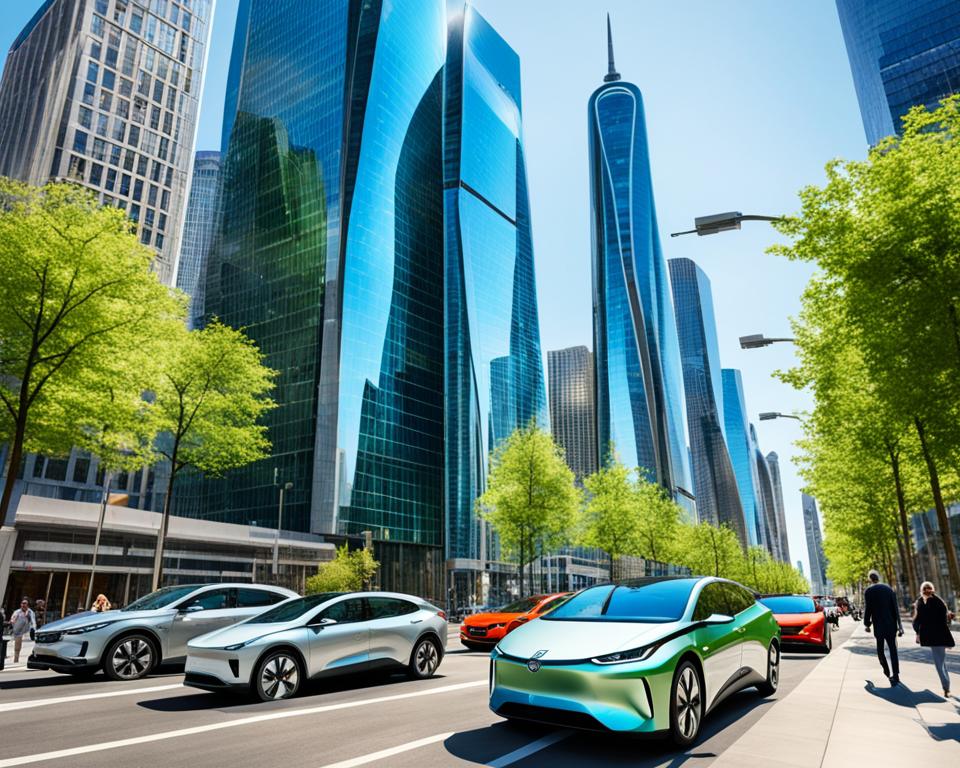
Conclusion
In conclusion, hybrid cars and plug-in hybrid electric vehicles are emerging as the future of urban mobility, offering a compelling combination of fuel efficiency, reduced emissions, and versatility. As the industry continues its shift towards electrification, PHEVs present a practical compromise that can appeal to mainstream buyers, providing a viable option for those seeking a more sustainable and cost-effective transportation solution.
With their ability to operate in all-electric mode for shorter trips and seamlessly transition to hybrid operation for longer journeys, hybrid and PHEV models are well-positioned to shape the future of urban transportation. By addressing the challenges of charging infrastructure and continuing to advance battery and powertrain technologies, these vehicles can play a crucial role in the pursuit of more sustainable and eco-friendly mobility solutions in cities across the United States and beyond.
The integration of hybrid cars and plug-in hybrids into the urban landscape can significantly contribute to the reduction of emissions and the promotion of sustainable transportation. As cities strive to improve air quality and mitigate the environmental impact of vehicle usage, the versatility and efficiency of these advanced powertrain technologies will be essential in meeting the diverse transportation needs of residents and commuters alike.
FAQ
What are the key advantages of hybrid cars and plug-in hybrid electric vehicles (PHEVs)?
How do PHEVs combine gas and electric power?
What is the resurgence in popularity of PHEVs due to?
How do hybrid and PHEV models compare in terms of pricing and cost savings?
What are the key challenges facing the adoption of hybrid and PHEV technologies?
How does the Chevrolet Volt fit into the history of plug-in hybrid technology?
How are automakers’ strategies evolving regarding hybrid and PHEV models?
Source Links
- https://www.capitalone.com/cars/learn/finding-the-right-car/why-plugin-hybrids-could-be-the-future-of-the-auto-industry/2997
- https://www.americanscientist.org/article/plug-in-hybrid-vehicles-for-a-sustainable-future
- https://www.iberdrola.com/sustainability/sustainable-mobility/differences-plug-in-hybrids-electric-cars
